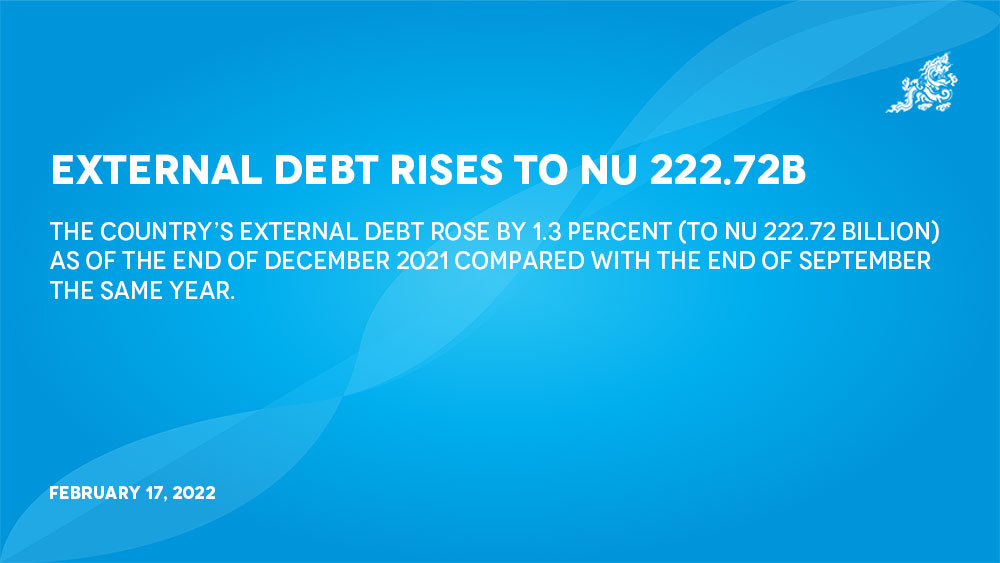Thukten Zangpo
The country’s external debt rose by 1.3 percent (to Nu 222.72 billion) as of the end of December 2021 compared with the end of September the same year.
This is according to the Ministry of Finance, which means the country’s external debt increased by Nu 2.89B.
According to the ministry’s public debt situation report, the increase is attributed to the disbursement of USD 30 million (M) by the Asian Development Bank for the Financial Market Development Programme.
India disbursed a loan of Nu 800M for ongoing hydropower projects: Nu 700M for Punatsangchhu Hydropower Project-II and Nu 100M for Tangsibji Hydropower Project.
The external debt to gross domestic product (GDP) ratio rose to 117.7 percent from 116.2 percent as of the end of December 2021.
However, an increase in the external debt was offset by the redemption of the government’s treasury bills (T-bills) of Nu 4B during the second quarter of the fiscal year (FY) 2021-22.
The total national debt fell slightly by 0.5 percent (to Nu 239.79B) as of end of December 2021 from Nu 240.89B as of end of September the same year.
Of the total national debt, 92.9 percent consists of external debt and 7.1 percent domestic. The total national debt to GDP ratio stands at 126.8 percent.
The redemption of the T-bills also contributed to domestic debt that fell by 19 percent (to Nu 17.07B) at the end of December 2021 compared to the end of September of the same year.
To meet the fiscal financing requirements and mobilise funds for Covid-19 purposes, the government borrowed from the domestic market through the issuance of T-bills and government bonds.
The government issued a 3-year government bond of Nu 3B that was issued in September 2020 and a 10-year government bond of Nu 700M in February 2021. The government also raised Nu 3B through a 10-year government bond in January of this year.
While the government redeemed 8B T-bills in January of this year and 5B T-bills will be redeemed this month. Similarly, the 3-year bond of Nu 3B will be redeemed in FY 2023-24.
Falling revenues contributed to the widening fiscal gap (to 8.60 percent of GDP) at the end of December 2021.
The ministry also stated that the high repayment debt in FY 2021-22 was due to Nu 17B T-bill’s stock, which will be redeemed in the coming months.
Most of the debt, constituting 73 percent of the total external debt, is hydro-related, from credit secured against the long-term power purchase agreement.
“The external debt servicing in FY 2021-22 is expected to increase by more than 100 percent compared to prior year external debt servicing, mainly because of full annual debt servicing for Mangdechhu Hydropower and liquidation of Standby Credit Facility of INR 4B,” the report stated.
The external debt repayment is expected to increase significantly from FY 2026-27 due to the start of the repayment of Punatsangchhu-I and Kholongchhu Hydropower loans, it added.
Repayment is projected to remain elevated from FY 2026-27 until FY 2036-37; repayment for all the mega hydropower projects will have begun by then.
However, after the liquidation of Mangdechhu Hydropower in FY 2037-38 and Punatsangchhu-II in FY 2038-39, repayment is projected to drop considerably and remain low and stable thereafter.


